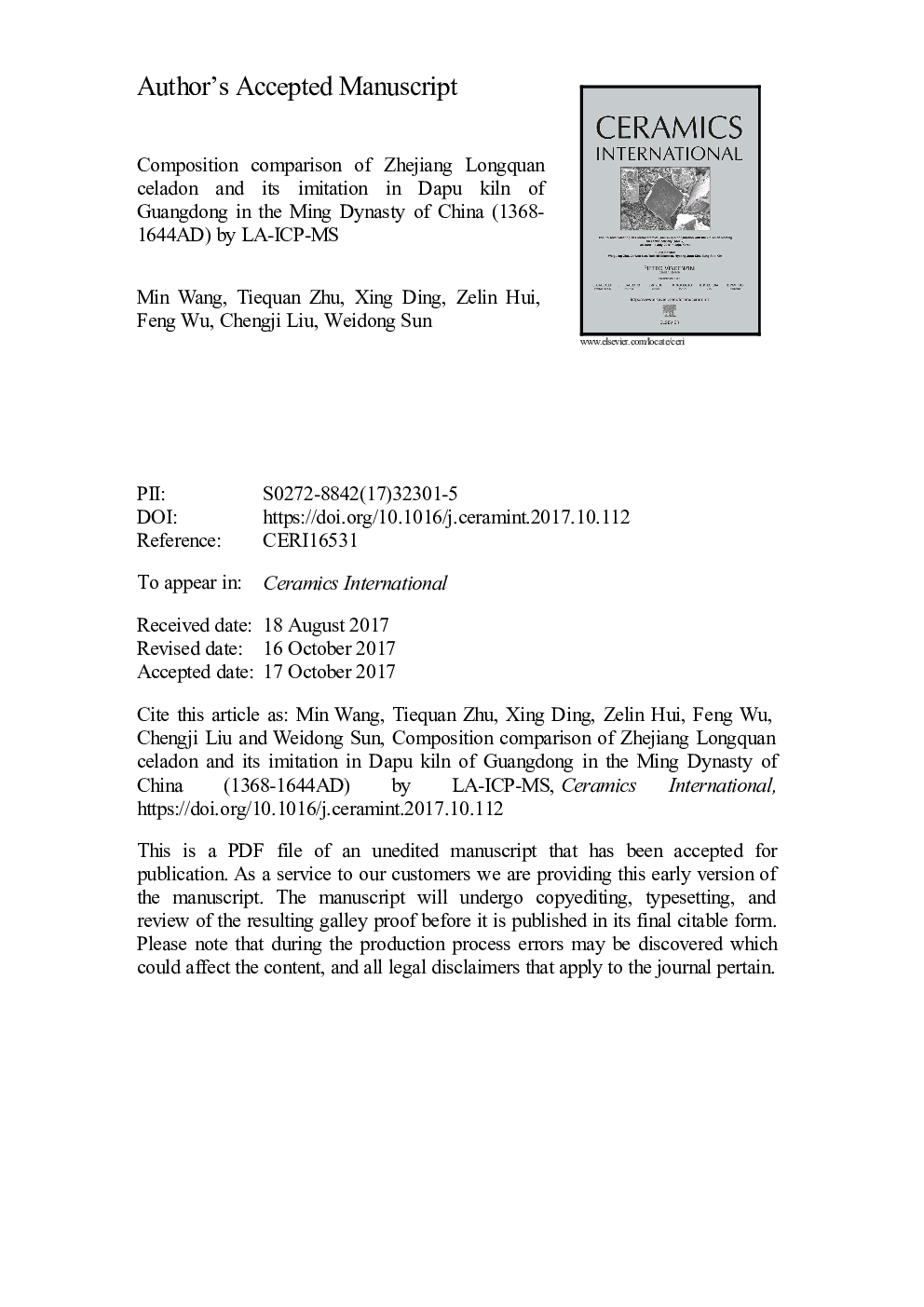| Article ID | Journal | Published Year | Pages | File Type |
|---|---|---|---|---|
| 7889054 | Ceramics International | 2018 | 36 Pages |
Abstract
Identification of Longquan celadon and its imitation is more and more caught the attention of experts in different fields. In this paper, by using laser ablation- inductively coupled plasma mass spectrometry (LA-ICP-MS) and other analytical methods, body and glaze of samples from Zhejiang Longquan celadon and its imitation in Dapu kiln of Guangdong in the Ming Dynasty of China were determined. Our research reveals that (1) the celadon bodies from the Dapu kiln contain less Al2O3, Mo, V, Cr and Ni, and more SiO2 content than those of the Longquan kiln; (2) the celadon glazes from both the Longquan and Dapu kilns show higher content of CaO, Al2O3, Ba, Sr, P2O5 and MnO than the corresponding bodies; and (3) both the celadon bodies and glazes from the Dapu kiln have higher ΣREE and in particular significantly negative Ce anomalies, distinctly different from those from Longquan kiln. These results would not only provide a good basis to identify the Longquan celadon and its imitation, and even to protract the global trade route in ancient time, but also be beneficial to better understanding the recovery and transmission of Longquan celadon manufacturing technology.
Keywords
Related Topics
Physical Sciences and Engineering
Materials Science
Ceramics and Composites
Authors
Min Wang, Tiequan Zhu, Xing Ding, Zelin Hui, Feng Wu, Chengji Liu, Weidong Sun,
